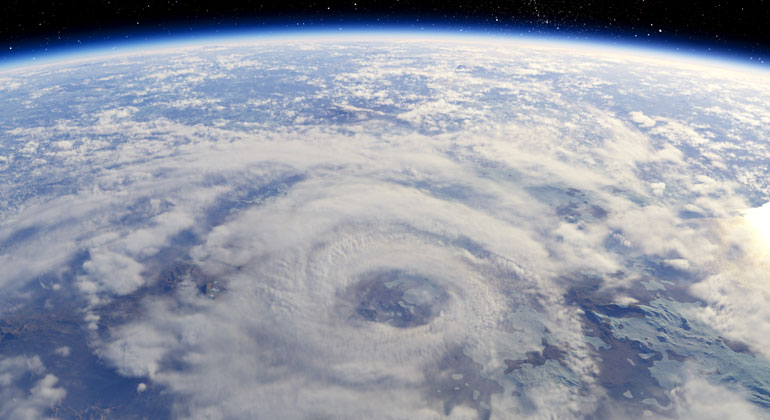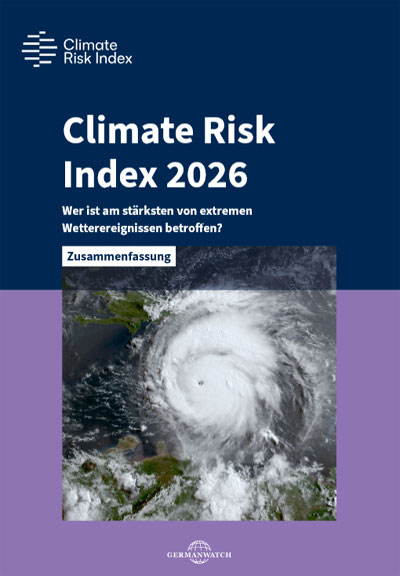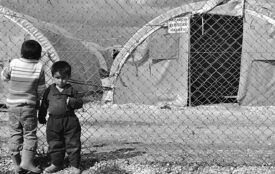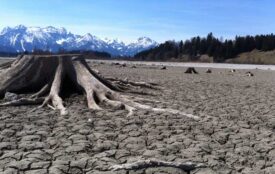Climate Risk Index: ranking shows how extreme weather events hit many poor countries particularly hard
New edition of Climate Risk Index by Germanwatch: Dominica, Myanmar, and Honduras most affected by extreme weather over the past 30 years. Almost all countries in the top group of the ranking are located in the Global South. While five EU countries and United States also appear among the top 30.
Around 40 per cent of all people worldwide – over three billion – currently live in the eleven countries that have been most severely affected by extreme weather events such as heat waves, storms, and floods over the past 30 years. These countries include India (ranked 9th) and China (11th), and others such as Libya (4th), Haiti (5th) and the Philippines (7th). None of the eleven countries are among the rich industrialised nations. At the same time, industrialised nations such as France (ranked 12th), Italy (16th), or the USA (18th) are among the 30 countries most affected by extreme weather. These are key findings of the Climate Risk Index (CRI) 2026, which the environmental and development organisation Germanwatch presented today at COP30 in Belém.
Over 830.000 fatalities and USD 4,5 trillion in damage over 30 years
In total, the index records over 9.700 extreme weather events between 1995 and 2024, with more than 830.000 fatalities and over USD 4,5 trillion in direct damage, adjusted for inflation. “Heat waves and storms pose the greatest threat to human life when it comes to extreme weather events,” says Laura Schäfer, one of the CRI’s authors. “Storms also caused by far the greatest monetary damage, while floods were responsible for the greatest number of people affected by extreme weather.”
Some countries ranking very high in the index suffered mainly from individual, yet extremely devastating weather events, while others were repeatedly hit by extreme weather. “Countries such as Haiti, the Philippines, and India – all of which are among the ten most affected countries in the CRI – face particular challenges. They are hit by floods, heat waves, or storms so regularly that entire regions can hardly recover from the impacts until the next event hits,” explains Vera Künzel, co-author of the index. “When more funding to address loss and damage is negotiated here at COP, the focus is on countries like these. Without more long-term support – including for adapting to the climate crisis – they will face insurmountable challenges.”
Dominica has been hit by devastating hurricanes
At the top of the index for the period 1995–2024 is Dominica, a very small Caribbean island nation that has been hit by devastating hurricanes several times. In 2017, Hurricane Maria alone caused damage amounting to USD 1,8 billion – almost three times the country’s gross domestic product (GDP). It was the most destructive of seven tropical cyclones in 30 years. “Dominica is at the top of our long-term index mainly because of the enormous economic damage in relation to its GDP. This clearly underscores the scientifically confirmed trend that in a warmer world, tropical cyclones are becoming more intense and more destructive,” explains Lina Adil, co-author of the index.
Another example is Myanmar, which ranks second. In 2008, Cyclone Nargis killed nearly 140.000 people and caused USD 5,8 billion in damage. Massive rainfall and subsequent flooding had the most devastating effects.
The CRI shows that countries in the Global South are particularly vulnerable and need support from wealthy nations. However, these nations are also increasingly affected by the impacts of the climate crisis. “The results of the CRI 2026 clearly demonstrate that COP30 must find effective ways to close the global ambition gap. Global emissions have to be reduced immediately; otherwise, there is a risk of a rising number of deaths and economic disaster worldwide. At the same time adaptation efforts must be accelerated. Effective solutions for loss and damage must be implemented, and adequate climate finance must be provided,” explains David Eckstein, co-author of the CRI.
The Climate Risk Index also conducted an individual assessment of the past year. The Caribbean archipelago of St. Vincent and the Grenadines and Grenada, which were devastated by a Category 5 hurricane in the summer of 2024, rank first and second on this list. Chad follows in third place, having been hit by devastating floods that lasted for months.









